Inside the research center
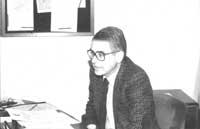
When on Wednesday of January we entered the office of the Director of Research of the CEIT, D. Manuel Fuentes, while talking on the phone, was preparing the class the next day. At the table he had a lot of papers, books and reports. When he stopped talking on the phone, from the second line there was another call waiting. We immediately realized this man's initiative and we want to thank him for the time he has spent with us. We complete your data with a visit to the facilities. During the visit we had a great guide: Jose Mari Rodriguez, scientist and friend.
The Centre for Technical Studies and Research of Gipuzkoa, CEIT, was founded at the beginning of this decade along with other research centres created by the Basque Government.
Image of the Protected Entity that was created at that time when Gartzia Egonxeaga was advisor to the Basque Government. The lack of an institution in the Basque Country dependent on the Higher Council for Scientific Research (therefore, the absence of transfer problems) and the consideration that private companies can address the public service contributed significantly to the creation of Protected Entities.
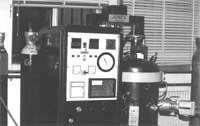
The acronym CEIT is the continuation of other acronyms, CIT (Gipuzkoa Technical Research Center). This center was (and is) attached to the School of Industrial Engineers of San Sebastian and was already well known in the field of science and technology.
Research centers address different areas of research and each has its own scope. Manuel Fuentes delimits the CEIT work area as follows:
If we rely on a system of R&D (Research and Development) in which we each position ourselves, the CEIT focuses especially on the early phases of Research and Development, while the rest of the research centers in the Basque Country are dedicated to the middle and final phases of development. While some centers work as collaborators of companies, we work the scientific activity through the school of engineers.
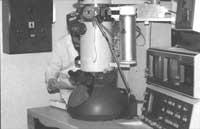
Before being a sponsoring entity, CEIT funding had two main sources. Agreements signed on the one hand with state centers and on the other with a large company like CAF. Specifically, this company studied the design of a high-speed wheel. This work was successfully completed and made known in the best magazines in the world. But the results of this work were not taken advantage of here, but were exploited in the United States by political problems.
Although these initial relations are maintained, the Basque Government created the figure of the Protected Entity and the perspectives of research centers have changed a lot. The condition of Tutelada Entity assumes that the Basque Government, by contracting the so-called generic projects, will cover at most 50% of the budget of the center. According to Manuel Fuentes, with these generic projects the centers are enriched and can cope with other deficient projects.
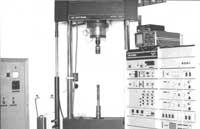
Throughout this decade, some industries, perhaps due to a change of environment, have shown their intention to improve their production and products. This means expanding the framework of research centres. In addition to the aforementioned CAF company, Tubos Juntos, Tubacex, Hermanos Artetxe, Iberduero, etc., are in contact with the CEIT.
While all the projects that exist with these companies are remarkable, we will only cite two.
The company CAF is currently conducting a study to improve rail suspensions in difficult conditions.
The project successfully carried out with Iberduero was the remote detection of breakdowns in power lines. It is a widely used system today.
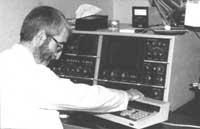
The project contracted in Europe is also noteworthy: On the one hand, the European Space Agency is studying the design of very complicated mechanisms of spatial location and on the other, a CAD package already executed. With the Coal and Steel Community, linear braking mechanics and plastic fatigue are some of the topics to be addressed. The European BRITE project is studying ZERMET materials (ceramic metal). Metallic glasses are also being investigated together with other European research centres.
There is a close relationship with several American companies. Some of the names can be cited the communications company INTEL and the oil company EXXON.
The projects and areas of work mentioned so far present the different areas of work of the CEIT. There are three main areas:
- applied
- materials
- control/electronics
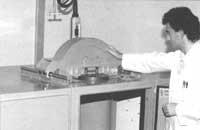
In addition to these there is a small section of the area. Being the youngest, she has not yet made great achievements.
Special staff
The centre that develops its activity in the early stages of research and development must have specific personnel. This is what happens at CEIT. In addition to people doing administrative and support work, all researchers are doctors, approximately 50. Eleven of them are the so-called principal investigators. To obtain this title, in addition to having the title of doctor, it is necessary to publish reports and articles in the best technical journals in the world. To say the best of the world in science means to publish it in certain magazines of the USA, Great Britain and Germany. It should be noted that nine doctors have completed two doctoral theses, one in the State and one abroad.
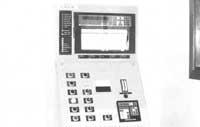
In research centers it is very normal to find fellows who remain in training for one, two or three years. There are PhDs instead of CEIT fellows. As it usually takes four or five years to become doctors, that's the time this type of people lasts. According to Manuel Fuentes, although doctoral students are training during the first two years, from the third year they begin to apply what they have learned, giving strength to young people to different projects.
As for the curriculum of CEIT researchers, many of them participate in national and international advisory committees, as well as specialized congresses.
Financing
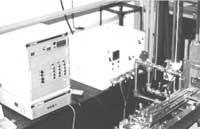
When we talk about finance, Fuentes told us: we are a non-profit entity, but we cannot have losses.
The main funding route comes from the Basque Government, with an approximate percentage of 45%. As mentioned above, in exchange for this money, projects approved by mutual agreement are carried out. According to the programs that accompany the Provincial Council of Gipuzkoa, it meets between 10-15% of the budget, another 10% of European programs and finally reaches the remaining 25-35% for working with private companies.
When we visited different departments, we saw such sophisticated and expensive machinery and equipment. The normal price of each machine was twenty million, thirty million pesetas. But when Fuentes explained how easily they got this tool, he surprised us. He told us that when a department needs some special device, the chief investigator of that department requests the corresponding entity. To this request your curriculum, publications, etc. adding, the requested is accepted without discussing any peseta. These words show the strength of the name of the CEIT.
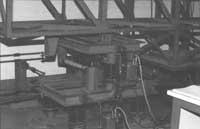
The interview also analyzed the relations with the School of Engineers. Both organizations consider these relationships to be good. On the one hand, as CEIT researchers are also teachers of the School of Engineers, they experience in a practical way what they teach, and this always gives another meaning to teaching. On the other hand, the CEIT is spread from the science of the university and develops its work around the scientific method.
A very careful role in CEIT is the relationship and exchange of information with other research centers. This means that every year there are between 6 and 10 famous visitors for a couple of weeks, the same happens with CEIT researchers who come to both European and US research centers.
Looking ahead
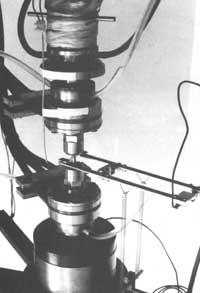
They are very optimistic about the future, but prudently. It seems that in the US, Britain and the Netherlands, some overgrown centres have failed. They are aware that most of their budgets are covered with public funds, so this will continue as long as the political will lasts, but one day this source of income will be exhausted and then they will have to seek funding in private enterprise. Therefore, even though applications are now more than offers, excessive growth can cause length problems. Another factor to consider is the area of research to invest in.
To do this you have to look at ten or twenty years, and of course you have to be right. Therefore, in some areas of great prestige and current success such as linear fracture mechanics, it will not increase further. In other areas that have not reached maturity, such as microelectronics and experimental mechanics, CEIT will be invested. However, the main reason for being optimistic about the future lies in the application of the scientific method, so that, instead of being at the service of a specific technology, it is at the service of a technological field, which hinders failure.
Main activities of the CEIT Materials Department
Department of electricity, electronics and control
Department of applied mechanics
Environmental Research Group
Calculation center
Special tooling
|
Buletina
Bidali zure helbide elektronikoa eta jaso asteroko buletina zure sarrera-ontzian











